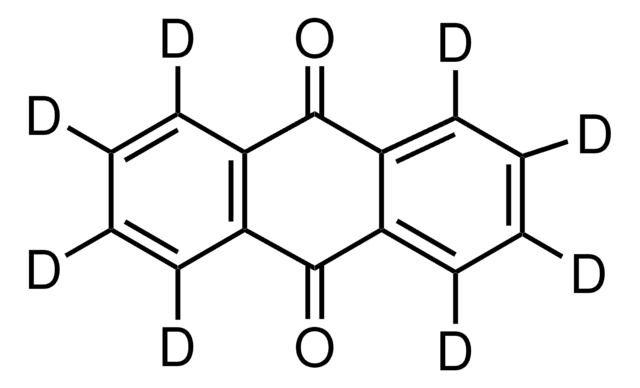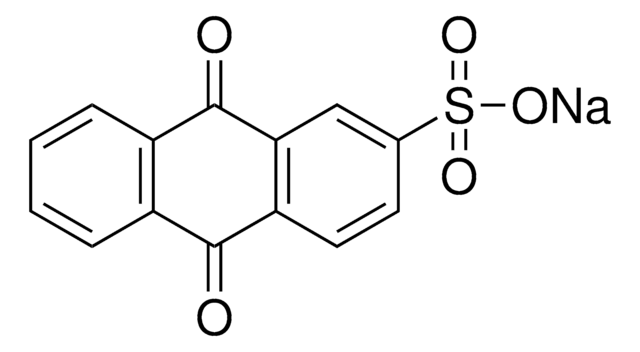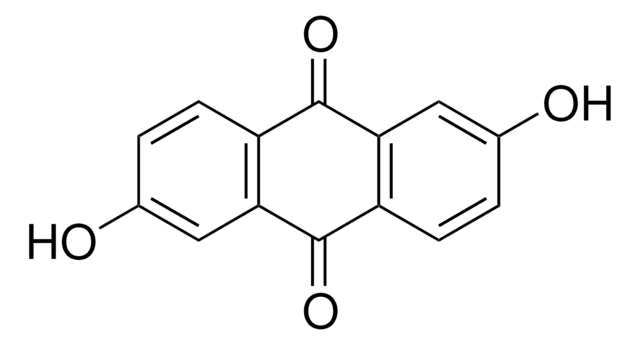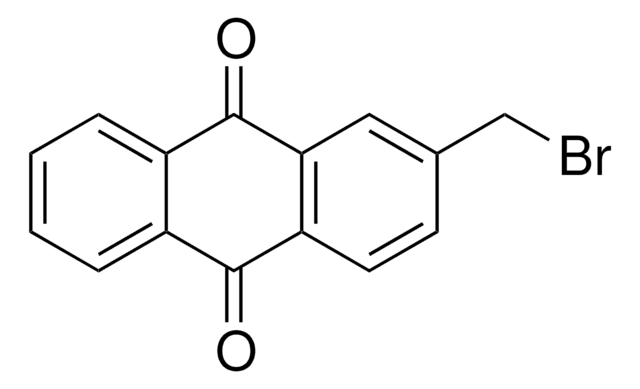A90004
Anthraquinone
97%
Synonyme(s) :
1,4,11,12-Tetrahydro-9,10-anthraquinone, 9,10-Anthraquinone, Anthracene-9,10-quinone, Anthradione
About This Item
Produits recommandés
Densité de vapeur
7.16 (vs air)
Pression de vapeur
1 mmHg ( 190 °C)
Pureté
97%
Forme
powder
Point d'ébullition
379-381 °C (lit.)
Pf
284-286 °C (lit.)
Chaîne SMILES
O=C1c2ccccc2C(=O)c3ccccc13
InChI
1S/C14H8O2/c15-13-9-5-1-2-6-10(9)14(16)12-8-4-3-7-11(12)13/h1-8H
Clé InChI
RZVHIXYEVGDQDX-UHFFFAOYSA-N
Vous recherchez des produits similaires ? Visite Guide de comparaison des produits
Catégories apparentées
Application
- In the synthesis of water-soluble anthraquinone derivatives such as 9,10-anthraquinone-2,6-disulfonic acid, disodium salt (AQ-2,6) and 9,10-anthraquinone-2-sulfonic acid, monosodium salt (AQ-2). These AQ derivatives are useful as redox catalysts for aeration in Becher process.
- As an indicator to determine the acid strength of poly(4-vinylpyridinium) hydrogen sulfate (P(4-VPH)HSO4) catalyst.
- As a pulping catalyst.
Mention d'avertissement
Danger
Mentions de danger
Conseils de prudence
Classification des risques
Carc. 1B - Skin Sens. 1
Code de la classe de stockage
6.1C - Combustible acute toxic Cat.3 / toxic compounds or compounds which causing chronic effects
Classe de danger pour l'eau (WGK)
WGK 1
Point d'éclair (°F)
482.0 °F - closed cup
Point d'éclair (°C)
250 °C - closed cup
Équipement de protection individuelle
dust mask type N95 (US), Eyeshields, Faceshields, Gloves
Certificats d'analyse (COA)
Recherchez un Certificats d'analyse (COA) en saisissant le numéro de lot du produit. Les numéros de lot figurent sur l'étiquette du produit après les mots "Lot" ou "Batch".
Déjà en possession de ce produit ?
Retrouvez la documentation relative aux produits que vous avez récemment achetés dans la Bibliothèque de documents.
Les clients ont également consulté
Notre équipe de scientifiques dispose d'une expérience dans tous les secteurs de la recherche, notamment en sciences de la vie, science des matériaux, synthèse chimique, chromatographie, analyse et dans de nombreux autres domaines..
Contacter notre Service technique












